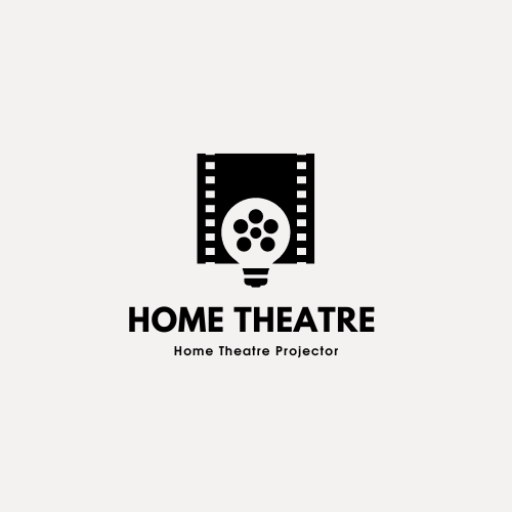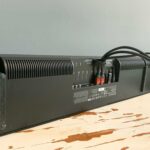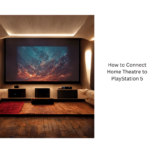Home Cinema
Understanding HDMI ARC and Earc for Simplified Home Theater Setups
Find out how HDMI ARC and eARC can streamline your home theater experience, making setup effortless and sound extraordinary. Discover more tips inside!

Understanding HDMI ARC and eARC can make your home theater setup a breeze. HDMI ARC simplifies connections by allowing audio to flow from your TV to your sound system using just one cable. This means less clutter and easier operation with one remote. eARC takes it a step further by supporting higher-quality audio formats, enhancing your sound experience. To get started, check for HDMI ports labeled ARC or eARC on your devices. With the right setup, you'll enjoy seamless audio and video. Stick around—we've got more tips to help you maximize your home theater experience.
Key Takeaways
- HDMI ARC simplifies home theater setups by allowing audio signals to travel back to soundbars or receivers using a single cable.
- HDMI eARC enhances audio quality, supporting lossless formats and providing higher bandwidth for immersive sound experiences.
- Both HDMI ARC and eARC help reduce cable clutter, making setup neater and more manageable for wall-mounted TVs.
- Compatibility can be checked by locating HDMI ports labeled "ARC" or "eARC" on both the TV and audio devices.
- Firmware updates are essential for maximizing the performance and compatibility of devices using HDMI ARC or eARC.
What Is HDMI?
HDMI, or High-Definition Multimedia Interface, is your go-to standard for transmitting high-definition video and audio signals through a single cable. It simplifies how you connect your devices, like TVs, soundbars, and gaming consoles.
Since its introduction in 2004, HDMI technology has evolved remarkably, supporting resolutions up to 8K and advanced features like HDR and 3D.
Standard HDMI cables, known as Type A, feature 19 pins and are used for most home entertainment devices. There are also Type C (mini) and Type D (micro) connectors for specific applications.
One of the standout features of HDMI is its ability to carry various audio formats, including multi-channel audio and lossless formats, which greatly enhance your home theater system's audio experience.
With the latest HDMI version, HDMI 2.1, introduced in 2017, you can enjoy increased bandwidth capabilities, allowing for impressive features like 4K at 120Hz and variable refresh rates.
This makes HDMI an essential component for anyone looking to enjoy high-quality video and digital audio in their home setup, whether you're gaming or watching movies.
Understanding HDMI ARC
An essential feature of modern home theater setups, HDMI ARC (Audio Return Channel) simplifies how you connect your TV to an audio system. Introduced with HDMI version 1.4 in 2009, it allows you to send audio from the TV back to an AV receiver or soundbar using a single HDMI connection. This not only reduces cable clutter but also streamlines your setup.
To take advantage of HDMI ARC, verify both your TV and audio device have HDMI ports labeled as ARC, typically found in HDMI 1 or 3. Standard HDMI cables work perfectly for these connections, making it accessible for most users.
While HDMI ARC supports up to 5.1 surround sound formats, be aware of its limitations; it primarily supports compressed audio formats like Dolby Digital and might lead to lip-sync issues during playback.
One of the key benefits of HDMI ARC is its ability to enhance your audio experience. You can enjoy sound from built-in TV apps through your external speakers, greatly reducing the need for multiple remotes when switching inputs.
Embrace HDMI ARC, and simplify your home theater experience today!
Exploring HDMI Earc
For those looking to elevate their home theater experience even further, eARC (Enhanced Audio Return Channel) offers significant advantages over standard ARC. With HDMI eARC, you can enjoy lossless audio formats like Dolby TrueHD and DTS-HD Master Audio, ensuring your audio output is crystal clear and immersive. This technology supports uncompressed audio transmission, simplifying connectivity for high-quality audio setups.
To fully leverage eARC's enhanced audio features, both your TV and audio devices need eARC-compatible HDMI ports. Here's a quick comparison of eARC and standard ARC:
| Feature | HDMI eARC |
|---|---|
| Bandwidth | Up to 37Mbps |
| Audio Channels | Up to 32 channels |
| Compatibility | Backward compatible with ARC |
eARC is perfect for serious home theater enthusiasts, as it enhances the audio experience with advanced compatibility for the latest audio technologies. It even provides automatic lip-sync correction, making it easier than ever to enjoy your favorite movies and shows without distractions. If you're investing in a sophisticated setup, eARC is a must-have.
Benefits of HDMI ARC
One of the key benefits of HDMI ARC is how it simplifies audio connections in your home theater setup. By allowing audio signals to travel back from your TV to your soundbar or receiver through a single HDMI cable, it eliminates the need for separate optical or coaxial cables. This means you can enjoy enhanced audio quality without the hassle of multiple connections.
Most modern TVs since 2009 include at least one HDMI ARC-enabled port, making it widely accessible for various setups. With HDMI ARC, you can also reduce cable clutter, especially if you have a wall-mounted TV. Consolidating both audio and video signals into one connection streamlines your space and keeps it tidy.
Another fantastic feature is that you can control the volume of your soundbar or receiver using your TV remote, which simplifies connections and reduces the number of remote controls you need.
Plus, HDMI ARC supports up to 5.1 surround sound formats, enhancing your overall audio experience when using built-in streaming applications. Embracing HDMI ARC makes your home theater experience more enjoyable and user-friendly.
Benefits of HDMI Earc
How can HDMI eARC elevate your home theater experience? This cutting-edge technology brings several benefits that enhance your audio-visual enjoyment. Here are three key advantages:
- Superior Audio Fidelity: HDMI eARC supports higher bandwidth (up to 37 Mbps), allowing for lossless audio formats like Dolby TrueHD and DTS-HD Master Audio. This guarantees you experience every detail in your favorite movies and music.
- Simplified Connectivity: With HDMI eARC, you can connect your devices through a single HDMI connection. This greatly reduces cable clutter and minimizes the number of remotes you need to manage, streamlining your setup.
- Lip-Sync Correction: eARC includes built-in lip-sync correction, which aligns audio perfectly with video. You won't have to deal with frustrating latency issues that can disrupt your viewing experience.
Additionally, eARC is backward compatible with existing ARC devices and is a standard feature in most mid- to high-end TVs and sound systems due to HDMI 2.1.
Checking Compatibility
To guarantee your setup works seamlessly, start by identifying the HDMI ports labeled "ARC" or "eARC" on both your TV and audio device.
Don't forget to check that all your devices have the latest firmware updates, as this can affect compatibility.
Identifying ARC Ports
When setting up your home theater, identifying the correct HDMI ARC or eARC ports is vital for guaranteeing seamless audio transmission. To make certain you're connecting everything properly, follow these steps:
- Locate the HDMI Ports: Check your TV and audio device for HDMI ports labeled "ARC" or "eARC." Typically, you'll find the ARC port on HDMI port 1 or 3.
- Confirm Compatibility: Only one HDMI port on your TV or soundbar supports ARC functionality, so it's important to connect to the right one.
- Update Firmware: Verify both your TV and audio device have the latest firmware updates. This helps optimize ARC or eARC features, enhancing audio performance.
If your TV supports HDMI ARC, it can transmit audio from built-in streaming apps to your soundbar or AV receiver, greatly improving your audio experience.
For the best results, connect an HDMI cable from the TV's ARC/eARC port directly to the corresponding port on your audio device. This setup not only simplifies your connections but also elevates your home theater experience.
Device Firmware Updates
Keeping your devices up to date is important for maximizing the benefits of HDMI ARC and eARC. Firmware updates can greatly enhance compatibility between your TV, soundbar, and AV receiver, ensuring that you enjoy seamless audio transmission.
Manufacturers regularly release updates to fix bugs and introduce new features that improve your home theater experience.
To check for these updates, head to the settings menu on each of your devices. Look for options labeled system updates or firmware management.
Regularly checking for updates is especially important when you buy new devices or make notable changes to your setup. Some devices might support automatic updates, which can make life easier, but it's still wise to manually check for the latest firmware.
Setup Method Options
Before diving into your home theater setup, it's crucial to check the compatibility of your devices with HDMI ARC and eARC.
Start by looking for HDMI ports labeled as ARC or eARC on both your TV and soundbar or audio system. Typically, only one HDMI port supports this feature.
Next, make sure that both your TV and soundbar or AV receiver have the latest firmware updates to achieve peak performance when using ARC or eARC.
Here are a couple of setup options to take into account:
- Connect sources directly to the TV: Use a single HDMI cable to the soundbar. Your TV remote will control volume and switch sources easily.
- Connect sources to the soundbar: Then connect the soundbar to the TV. This option might limit some surround sound functionality.
Lastly, verify the HDMI cables you're using; standard HDMI cables are okay for ARC, but for eARC, you'll want High-Speed or Ultra High-Speed HDMI cables to guarantee the best audio return channel performance.
Setup Options for ARC/eARC
There are two main setup options for configuring ARC or eARC in your home theater system.
The first option connects all your source devices—like streaming boxes or gaming consoles—to the TV. You'd then use a single HDMI cable from the TV's designated ARC/eARC port to the soundbar or AV receiver. This setup allows you to control volume and switch sources easily with your TV remote, but it may limit some surround sound functionalities.
The second option connects all source devices directly to the soundbar. Then, you'd connect the soundbar to the TV using an HDMI cable. This setup usually offers better audio performance and full surround sound capabilities, though you'll need to manage volume and source switching through the soundbar or its remote.
Whichever option you choose, make certain both your TV and soundbar support HDMI ARC or eARC and that their firmware is up to date.
Compatibility is vital for seamless audio signals, so check the HDMI ports—typically labeled ARC on HDMI port 1 or 3. This guarantees you get the most out of your home theater experience.
HDMI CEC Control Explained
Harnessing the power of HDMI CEC (Consumer Electronics Control) can greatly enhance your home theater experience by allowing multiple HDMI devices to communicate seamlessly. This means you can control various devices with a single remote control, simplifying your setup.
Here are three key benefits of HDMI CEC:
- Power On/Off: You can power on or off all connected HDMI devices with just one button, eliminating the need for multiple remotes.
- Volume Control: Adjusting the volume across devices becomes effortless, allowing for a consistent audio experience.
- Device Compatibility: For peak performance, all connected devices must support HDMI CEC. Check your device manuals for specific CEC settings, as different manufacturers use unique names—like Anynet+ (Samsung) and Bravia Sync (Sony).
To get started, you may need to enable CEC settings in your device menus, as they're often disabled by default.
Additionally, verify that you power up your devices in the correct order to guarantee they recognize each other's signals.
Troubleshooting Common Issues
Troubleshooting common issues with HDMI ARC and eARC can be straightforward if you know what to check. First, confirm your TV and audio devices, like a soundbar or receiver, are compatible with HDMI ARC. Look for labeled HDMI ports; improper configurations can lead to audio issues.
If you're not getting sound or the quality is poor, check the audio output settings on both the TV and source devices. Toggle between bitstream and PCM formats for peak performance.
Another frequent problem arises from HDMI CEC control. Always power on your TV before the audio devices to guarantee proper recognition of audio signals. It's also vital to verify that all devices are running the latest firmware. Outdated software can lead to compatibility problems and impact audio transmission quality over ARC or eARC.
If issues persist, try switching HDMI ports or using a different HDMI cable. Faulty connections or incompatible cables may cause handshake issues or signal degradation.
Limitations of HDMI ARC/eARC
When using HDMI ARC or eARC, you might run into some audio format limitations that can affect your experience.
While eARC offers support for high-quality, uncompressed audio, many older devices only handle compressed formats, which can restrict what you hear.
Plus, if your TV or soundbar isn't fully compatible, you won't get to enjoy all the benefits eARC has to offer.
Limited Audio Format Support
While HDMI ARC provides a convenient way to connect your audio system to your TV, it falls short in supporting advanced audio formats. With only compressed audio options available, you might find the sound quality lacking compared to direct connections to a receiver or soundbar.
Here are some limitations of HDMI ARC you ought to keep in mind:
- Limited Audio Formats: HDMI ARC typically supports stereo and Dolby Digital, which means you won't enjoy the higher quality of lossless formats like Dolby TrueHD or Dolby Atmos.
- Audio Passthrough Restrictions: Some TVs only allow 5.1 audio passthrough, forcing you to connect directly to source devices like Blu-ray players or gaming consoles for better audio quality.
- eARC Advantages: While eARC overcomes many of these limitations, older TVs won't transmit advanced audio formats, leading to compatibility issues that can frustrate your home theater setup.
If you're aiming for a richer audio experience, you might want to think about upgrading to eARC or verify your devices are compatible to fully exploit higher-quality audio formats.
Compatibility Issues With Devices
Setting up your home theater can be an exciting yet frustrating experience, especially when it comes to compatibility issues with HDMI ARC and eARC. Here's what you need to know:
| Device Type | Compatibility Issue |
|---|---|
| Older TVs | Often don't support eARC |
| HDMI Ports | Limited to one ARC/eARC port per device |
| Audio Formats | Inconsistent support for surround sound |
| Streaming Devices | Might not pass through advanced audio formats |
Many older TVs lack HDMI 2.1 compatibility, which means you can't access advanced audio formats like Dolby Atmos. Even if your devices support HDMI ARC, you may face limitations with audio formats, as TVs often don't pass through 5.1 audio signals. This reduces the overall audio quality in your home theater setups.
Additionally, while some devices implement ARC features, they do so selectively, leading to unpredictable performance. You'll want to plan your connections carefully to avoid port conflicts, as there's usually only one HDMI port designated for ARC/eARC per device. These compatibility issues can hinder your surround sound experience, making it essential to check your devices before diving into setup.
Frequently Asked Questions
Which Is Better HDMI ARC or Earc?
When deciding between HDMI ARC and eARC, you'll find eARC's superior bandwidth and support for advanced audio formats make it a better choice for your system, ensuring you enjoy enhanced sound quality and improved synchronization.
How Do I Use HDMI ARC on My Home Theater?
Imagine a sleek cable connecting your TV and soundbar, effortlessly carrying sound. You'll plug the HDMI into the ARC port, enable ARC in settings, then control everything with your TV remote. It's that simple!
Should I Use HDMI 2.1 or Earc?
You should definitely consider using HDMI 2.1 with eARC if you want superior audio quality and future-proofing. It supports advanced formats and guarantees seamless connectivity, enhancing your overall home theater experience without extra hassle.
Do I Need a Special HDMI Cable for ARC or Earc?
If you're connecting a soundbar to your TV, you'll need a standard HDMI cable for ARC. For eARC, grab a High-Speed or Ultra High-Speed cable to guarantee you enjoy high-quality audio without issues.
Conclusion
In summary, understanding HDMI ARC and eARC can simplify your home theater setup, making it easier to enjoy high-quality audio and video. As the saying goes, "Good things come to those who wait," but with these technologies, you won't have to wait long for an immersive experience. By leveraging their benefits, setting up your system becomes a breeze, letting you dive straight into your favorite movies and shows without the hassle of tangled wires and complicated configurations.
Hello, I’m Art, and I’m excited to be a part of the 1Home Theatre Projector team. As a writer, I’m here to contribute my knowledge and insights to help you achieve the ultimate home cinema experience. I understand that making decisions in the world of home entertainment can be complex, and I’m here to simplify the process for you.
Home Cinema
Projector Optics Cleaning and Maintenance: Preserving Image Quality
To ensure vibrant images and extend your projector’s lifespan, discover essential cleaning tips that will keep your optics in pristine condition.
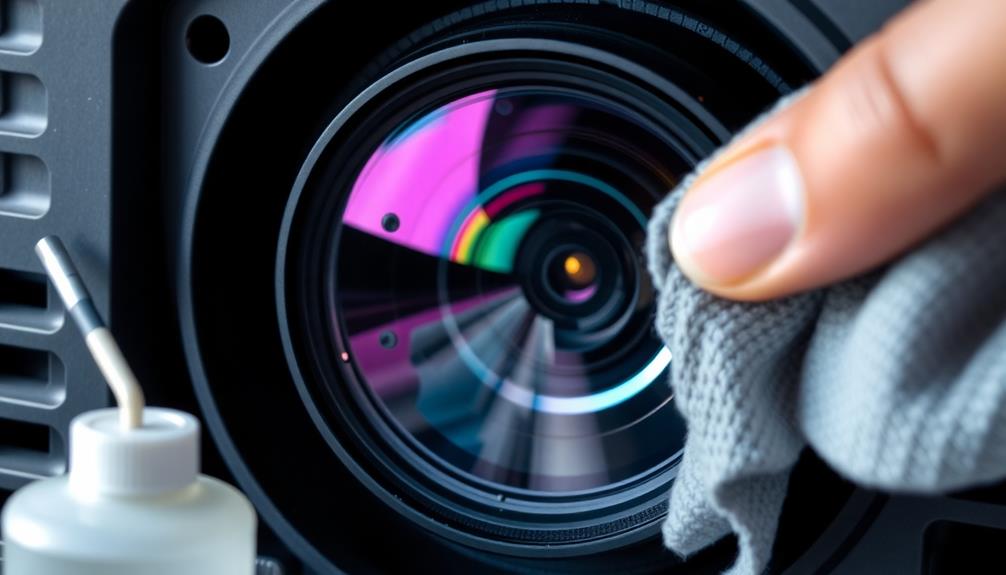
To preserve image quality, you should regularly clean and maintain your projector optics. Start by inspecting the lens for dust and smudges, using a soft brush to dislodge particles. Opt for Kodak lens cleaning paper and a gentle optical cleaner when needed. Avoid harsh chemicals and cotton balls to prevent damage. Regular cleaning not only enhances clarity but also extends the projector's lifespan. Don't forget to maintain the projector case and lamp vents. Effective care prevents dust buildup, ensuring vibrant images. There's much more to explore about keeping your projector in top shape, so you might want to keep going!
Key Takeaways
- Regularly inspect and clean projector lenses using proper tools to prevent dust accumulation and maintain image clarity.
- Employ safe cleaning techniques, such as using microfiber cloths and avoiding direct application of cleaning solutions on lenses.
- Maintain the projector case and exterior by wiping down surfaces and using a vacuum with a soft brush to remove dust.
- Utilize filters and lens caps to protect optics from dust and enhance image quality, ensuring consistent performance.
- Establish routine maintenance schedules to identify and address potential issues early, preserving projector lifespan and image quality.
Importance of Regular Maintenance

Maintaining your projector isn't just a good idea; it's fundamental for getting the most out of your investment. Regular maintenance, particularly cleaning the lens and external components, plays a significant role in enhancing performance and extending the lifespan of your device.
When you perform routine inspections, you can quickly identify dust accumulation and other potential issues before they start affecting image quality.
Proper care practices are essential. Using the right cleaning materials and techniques helps you avoid damaging sensitive lens coatings and internal components.
The cleaner your environment, the less often you'll need to clean your projector. A dust-free space not only allows for ideal image clarity but also contributes to the longevity of your equipment.
Don't underestimate the benefits of scheduled professional servicing. Having experts handle internal cleaning guarantees that all components remain in excellent condition, leading to consistent image quality over time.
Essential Cleaning Tools
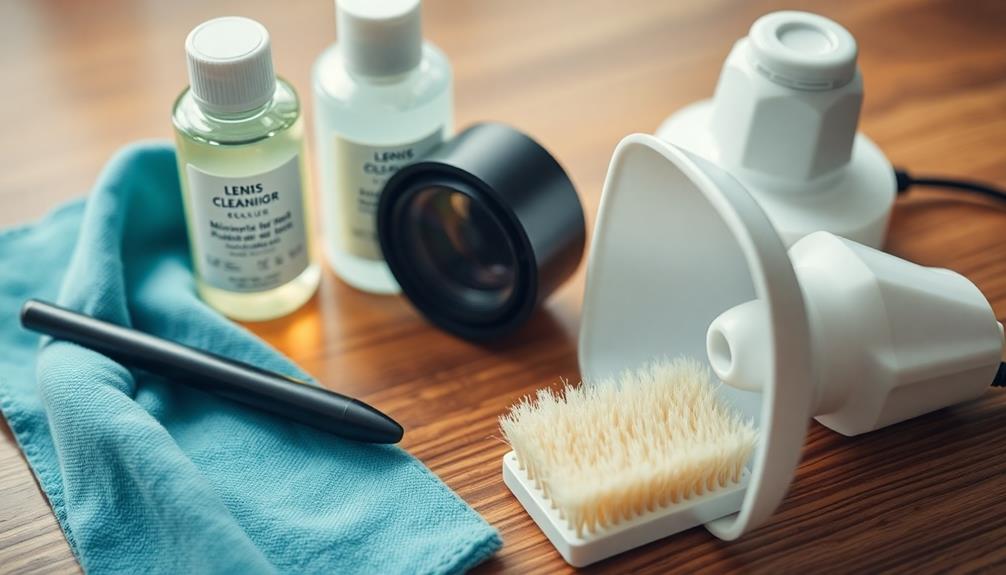
To keep your projector lenses in top shape, you'll need the right cleaning tools.
Using Kodak lens cleaning paper, a versatile lens pen, and microfiber cloths can make a significant difference in maintaining clarity.
Don't forget to have soft brushes and specialized cleaning solutions on hand for those tougher smudges.
Recommended Cleaning Supplies
Keeping your projector lenses clean is essential for ideal performance, and having the right cleaning supplies makes all the difference. To maintain your projector lens in top condition, consider these recommended cleaning supplies:
- Kodak lens cleaning paper: This option minimizes scratches compared to other materials, ensuring a safer clean.
- Soft cloths or microfiber cloths: Perfect for gentle dusting, these materials help maintain the lens surface without causing damage.
- Lens pen: Designed for optical surfaces, this tool provides dual functionality for dust removal without direct contact with the lens.
For stubborn smudges, high-purity alcohol or professional cleaning solutions can be effective, but for regular use, pure water is often the safer choice.
You'll want to avoid using cotton balls or harsh chemicals, as these can leave fibers or residues that might harm the lens coating, ultimately affecting image quality.
Safe Cleaning Techniques
Proper cleaning techniques are just as important as having the right supplies when it comes to maintaining your projector's performance. Start by using a soft brush, like a 0.5 mm brush, to gently dislodge any dust particles on the lens. This step's vital because it prevents scratches before you use any cleaning solution.
When you're ready to lens clean, opt for Kodak lens cleaning paper and a solution specifically designed for optical surfaces. These products effectively remove smudges without risking damage. After brushing, use an ultra-microfiber cloth to wipe the lens gently. Unlike traditional materials, ultra-microfiber reduces the chances of lint and scratches.
Avoid using cotton balls with liquids, as the fibers can stick to the lens surface. Always apply cleaning solutions to your cloth rather than directly onto the lens to prevent pooling, which can cause damage.
For stubborn residues, you might consider using isopropyl alcohol (IPA) sparingly and only when absolutely necessary. Excessive use can harm the lens coating, compromising your projector's image quality.
Step-by-Step Lens Cleaning

Cleaning your projector lens is vital for maintaining ideal image quality and performance. Follow these simple steps to guarantee your lens stays in top condition.
- Inspect the lens: Look for visible dust or smudges. Use compressed air to gently dislodge any loose particles.
- Moisten the cleaning material: For stubborn smudges, dampen lens-cleaning paper or a soft microfiber cloth with distilled water or a recommended lens cleaner.
- Clean gently: Apply the damp cloth in a gentle circular motion, avoiding cotton balls or abrasive materials that could scratch the lens.
Before cleaning, make sure the lens has cooled for at least 30 minutes.
After you've cleaned it, allow the lens to air dry completely before reassembling or using the projector. This step is essential to prevent moisture buildup that could compromise performance.
Regular maintenance is key, so schedule light cleaning routines at least once a month.
This helps maintain lens clarity and prevents dust accumulation that could impact your image quality.
Maintaining the Projector Case

When it comes to maintaining your projector case, start by powering off and unplugging the device for safety.
Use a soft cloth to wipe down the exterior and keep dust at bay, and for tough stains, a damp cloth with mild detergent will do the trick.
Regular cleaning not only keeps your projector looking good but also helps it run smoothly for years to come.
Exterior Cleaning Techniques
Maintaining the projector case is essential for guaranteeing both its longevity and performance. Start by powering off and unplugging the projector to prevent any electrical hazards. Use a soft cloth to gently wipe the surface of the lens and the projector case, removing surface dust. If you encounter stubborn stains, a damp cloth with neutral detergent will work wonders without damaging the finish.
To keep your projector in prime shape, consider these cleaning techniques:
- Wipe down the projector case regularly to keep it dust-free.
- Use a vacuum with a soft brush attachment to clean the vents and guarantee maximum airflow.
- Avoid harsh chemicals like alcohol or wax, as they can damage the material.
Keep an eye out for any dust on the lens, as it can affect image quality. Establishing a routine cleaning schedule will help maintain a dust-free environment around your projector.
Don't forget to check the lens cap, too, to guarantee it's clean and ready for use. By implementing these techniques, you'll preserve the performance and lifespan of your projector.
Dust Prevention Strategies
How can you effectively keep dust at bay and protect your projector? Start by regularly wiping the exterior of your projector case with a soft cloth. This simple cleaning routine removes surface dust, preventing it from entering the internal components and affecting image quality.
When your projector isn't in use, store it in a clean, dust-free environment. This greatly reduces the likelihood of dust settling on the case and lens.
Additionally, use a vacuum with a soft brush attachment to clean the vents. This maintenance step prevents dust buildup that could impact internal cooling and overall performance.
Be mindful of where you place your projector. Avoid high foot traffic areas and locations near open windows, as these conditions can increase dust exposure.
Care for Lamp Vent Screens

Care for Lamp Vent Screens
Regular care for lamp vent screens is vital to keep your projector running smoothly and efficiently. Neglecting these screens can lead to debris buildup, which impacts airflow, projector performance, and ultimately, image quality.
Proper maintenance is particularly important for gaming enthusiasts, as high refresh rates enhance gaming experiences. To guarantee safety during maintenance, always turn off and unplug your projector before you start cleaning.
Here's how to effectively care for your lamp vent screens:
- Use a vacuum with a crevice attachment: This allows you to remove dust without direct contact with internal components.
- Follow specific model instructions: Proper lamp removal helps you access the vent screens without causing damage.
- Avoid touching the glass of the lamp directly: This prevents contamination that could lead to image quality issues.
Protecting Projection Optics

To keep your projection optics in top shape, it's crucial to implement lens protection techniques and regular maintenance practices.
Using filters and lens caps can greatly enhance image quality and shield your equipment from dust and scratches.
Lens Protection Techniques
When it comes to protecting your projector's optics, implementing effective lens protection techniques is essential.
These methods not only help maintain image quality but also reduce dust accumulation and the need for frequent cleaning.
Here are some practical techniques you can adopt:
- Attach a circular polarizer filter: This enhances image contrast while safeguarding against dust and scratches.
- Use lens caps: When the projector's idle, covering the lens prevents dust from settling, ensuring it remains clean and ready for use.
- Secure filters with double-sided tape: If your lens lacks screw provisions, this provides extra protection against environmental factors.
Regular Maintenance Practices
Maintaining your projector's optics is essential for guaranteeing crisp, clear images and ideal performance. Implementing regular inspections of the lens for dust and smudges helps you maintain image clarity and guarantees peak performance. Establishing light cleaning routines with appropriate materials, like microfiber cloths, can notably reduce the frequency of deep cleaning.
To protect your projector further, consider the following preventive measures:
| Maintenance Practice | Frequency | Benefits |
|---|---|---|
| Regular Inspections | Weekly | Detects dust/smudges early |
| Light Cleaning Routines | Bi-weekly | Maintains image clarity |
| Preventive Measures | Monthly | Protects lens from dirt |
| Professional Servicing | Annually | Addresses internal dust issues |
Keeping your projector in a dust-free environment and storing it with the lens cap on when not in use minimizes dirt accumulation on the optics. Finally, scheduling professional servicing for internal cleaning when necessary guarantees that any internal dust issues are resolved without risking damage to your projector. By following these practices, you'll enhance your projector's longevity and performance.
Importance of Filters
Filters play an essential role in protecting your projector's optics and enhancing image quality. By using the right filters, you can markedly reduce glare and improve contrast, making your viewing experience much more enjoyable.
Regular maintenance of these filters not only preserves their effectiveness but also safeguards the underlying projection optics from potential damage.
Consider these key benefits of using filters:
- Circular polarizer filters can boost image contrast, ensuring vibrant colors and sharp details.
- Lens caps, when your projector's not in use, keep dust away, minimizing cleaning frequency and maintaining image clarity.
- Double-sided tape can secure filters on lenses that don't have a screw provision, preventing any slippage during operation.
Implementing high-quality filters is vital for prolonging the lifespan of your projector. They help maintain consistent image quality, ensuring you get the most out of your investment.
Remember to inspect and clean your filters regularly to keep them functioning at their best. By prioritizing these practices, you'll enhance your overall projection experience while protecting your valuable equipment.
Common Cleaning Mistakes
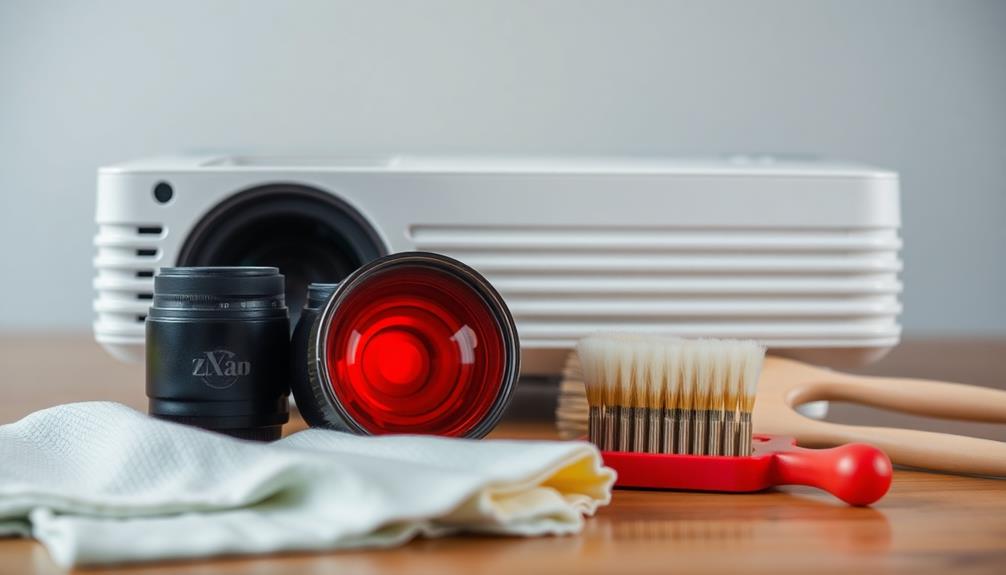
Many projector owners make common cleaning mistakes that can harm their lenses and affect image quality. One major error is using cotton balls with liquids; they can leave behind fibers that stick to the lens, potentially causing scratches. Instead, opt for microfiber cloths that won't shed.
Blowing air directly from your mouth onto the lens is another mistake. This can introduce saliva, which may damage the lens coating. Remember, that coating is essential for ideal performance.
Frequent and rigorous cleaning can backfire too. Excessive contact with the lens surface often leads to more haze rather than clarity, resulting in scratches. When you apply cleaning solutions, always wet the cloth first; dry materials can be abrasive and lead to damage.
Dust Impact on Performance

Even a thin layer of dust on your projector lens can impact image quality, making it crucial to keep the lens clean.
While minor dust particles mightn't be noticeable, excessive dust accumulation can blur your images and diminish contrast, leading to a subpar viewing experience.
Regular cleaning is essential for maintaining peak performance.
Consider the effects of neglecting dust on your projector:
- Reduced image clarity: Dust can obscure details and make images look hazy.
- Increased lens damage risk: Using harsh cleaning methods on heavily soiled lenses can harm delicate coatings.
- Frequent cleaning necessity: Letting dust build up will force you to clean more often, disrupting your setup.
Troubleshooting Image Issues
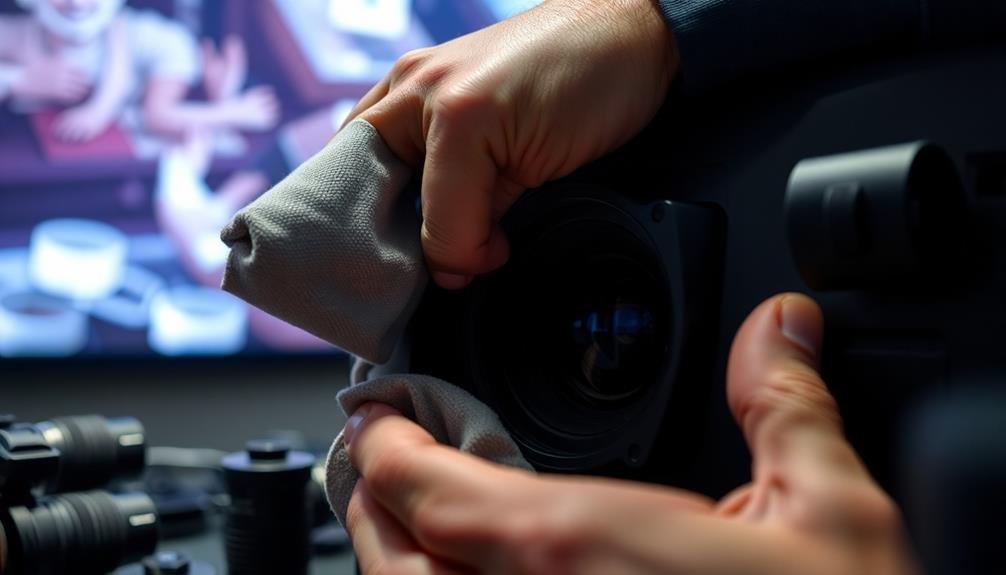
Neglecting lens cleaning can lead to various image issues that may affect your viewing experience. For instance, blurred images often indicate lens contamination or internal dust buildup. When you notice these symptoms, it's essential to act quickly, as they can require professional servicing for thorough cleaning.
If your projector exhibits contrast loss or image distortion, you should check for internal dust and particles that may not be visible on the lens surface. Regular inspections of both the lens and internal components can help you identify potential issues early, preventing significant degradation of image quality.
When cleaning, always use appropriate cleaning techniques. Excessive or harsh methods can damage the lens coating and worsen image clarity. Use a microfiber cloth and specialized lens cleaner to avoid scratching the surface.
For persistent lens issues, consulting the manufacturer's guidelines is wise. If the problems continue, seeking professional assistance guarantees proper maintenance and prevents further complications.
Professional Servicing Recommendations
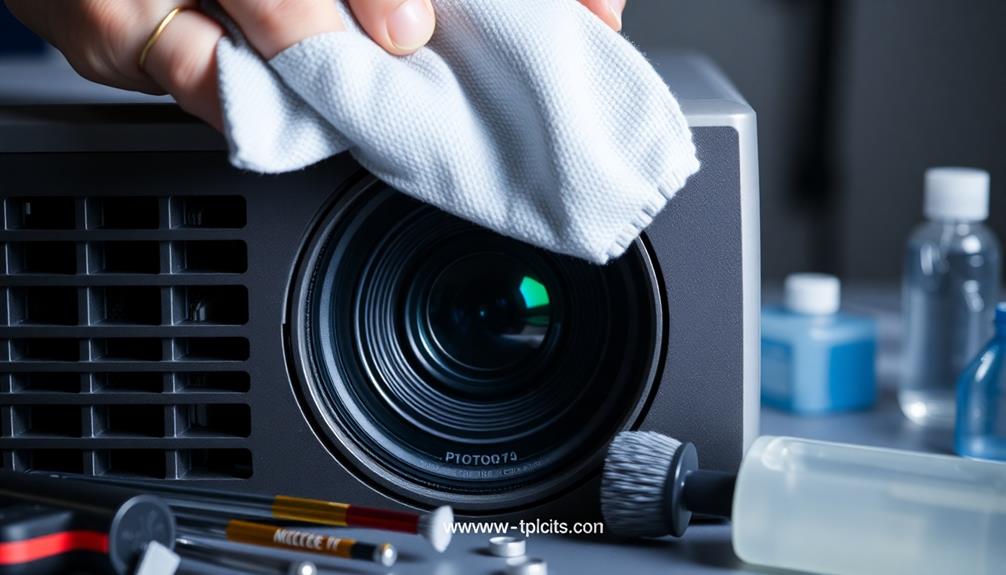
When it comes to maintaining your projector, professional servicing is often a necessity for keeping it in top shape. Scheduling a professional maintenance visit at least once a year can greatly enhance your projector's ideal performance and image quality.
Technicians specialize in cleaning internal components and can reach areas that are tricky for you, such as:
- The optical engine, where dust accumulation can degrade performance.
- Internal lens assemblies, which require careful handling to avoid damage.
- Other hard-to-access areas that might harbor dust and dirt.
Regular inspections by professionals can catch wear and tear before they lead to bigger issues, ensuring that your projector remains functional and efficient.
These experts are equipped with the right tools and knowledge to provide thorough maintenance, extending your projector's lifespan. With their help, you can maintain high-quality image output and enjoy a seamless viewing experience.
Don't overlook the importance of professional servicing—it's a key investment in preserving the performance and longevity of your projector.
Frequently Asked Questions
How to Improve Projector Image Quality?
To improve projector image quality, regularly adjust settings like brightness and contrast, guarantee proper resolution, and keep the projector's lens clean. Use high-quality content and maintain an ideal viewing environment for the best experience.
How Do You Clean Projector Optics?
To clean projector optics, power off and unplug it first. Use compressed air to remove dust, then gently wipe the lens with a soft cloth and lens cleaner, avoiding harsh chemicals or abrasive materials.
Do Projectors Require Maintenance?
While you might think projectors run endlessly, they actually need maintenance. By cleaning them regularly, you'll guarantee they perform at their best, extending their lifespan and enhancing your overall viewing experience greatly.
What Is the Preventive Maintenance of a Projector?
To prevent issues, regularly inspect your projector for dust, keep it in a clean environment, and store it properly. Following manufacturer guidelines for cleaning and scheduling professional servicing will enhance its longevity and performance.
Conclusion
By regularly cleaning and maintaining your projector, you're not just preserving image quality; you're enhancing your viewing experience. Think of it this way: a well-maintained projector is like a sharp eye, delivering vivid details and crisp colors. Don't let dust and neglect dim your visuals. Commit to routine care, and your projector will reward you with stunning performances for years to come. So, why wait? Start your maintenance journey today and see the difference for yourself!
Hi, I’m Dominique. I love movies and want everyone to have the best home cinema experience possible. That’s why I started 1home Theatre Projector. We help people build their home cinema system using the latest technology and news on laser tv and all-around home entertainment.
We’re a small team of movie buffs (and experts) who are passionate about giving our readers the best advice and information possible. So whether you’re just starting out or you’re looking to upgrade your home cinema system, we’ve got you covered!
Home Cinema
How to Use a Projector for Immersive Audio Visualization
You’ll discover how to transform audio into captivating visuals using a projector, but wait until you see the stunning effects you can create!

To use a projector for immersive audio visualization, start by selecting a projector with over 3000 lumens for clear images. Connect it to your laptop or audio source using HDMI or VGA cables, then adjust the focus and keystone settings for peak viewing. Run audio processing software like Processing to analyze audio signals with Fast Fourier Transform (FFT). Create dynamic visuals that respond to the audio frequencies using VPT for projection mapping. Verify your visuals sync with the audio for an engaging experience. With these steps, you'll reveal new dimensions in your audio experience, and there's so much more to explore next!
Key Takeaways
- Choose a projector with over 3000 lumens and position it correctly for optimal image size and clarity.
- Connect your projector to a laptop using HDMI or VGA, and select the appropriate input source.
- Use software like Processing, VPT, and libraries for real-time audio analysis and visualizations.
- Perform FFT analysis on audio to create visually dynamic projections that respond to frequency changes.
- Test various projection surfaces and utilize masking techniques for clear, engaging visuals in sync with audio.
Setting Up Your Projector
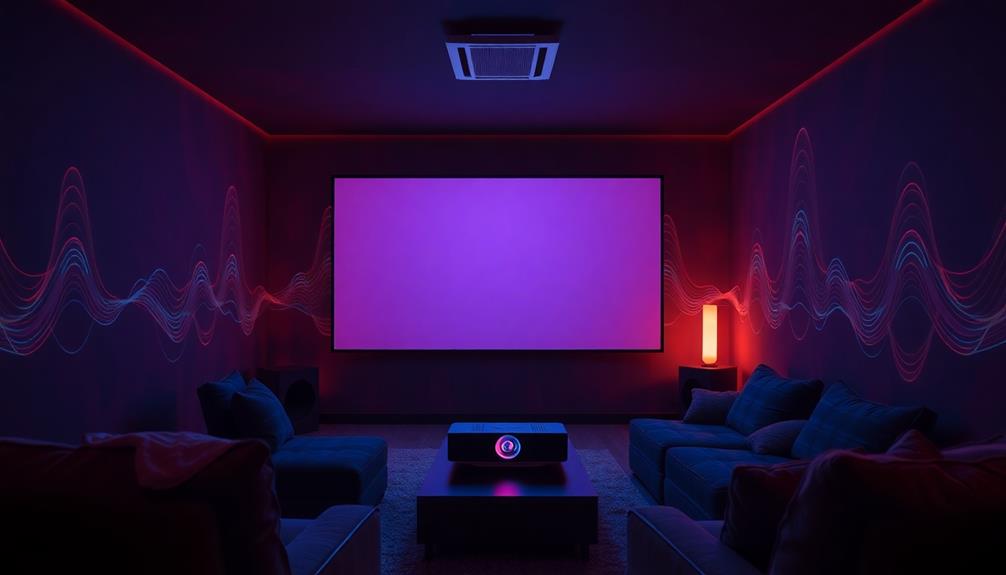
Setting up your projector is essential for achieving the best audio visualization experience. First, choose a projector with sufficient brightness—ideally over 3000 lumens—so you can enjoy clear visuals, even in well-lit spaces.
Position your projector at the right distance from your projection surface, following the manufacturer's throw ratio guidelines to guarantee ideal image size and clarity.
Next, connect your projector to your laptop or audio source using the appropriate HDMI or VGA cables. Don't forget to select the correct input source on the projector to get things started.
Once connected, adjust the focus and keystone settings to create a sharp, rectangular image. This step helps compensate for any tilt or angle from your projection surface.
Essential Hardware and Software

To kick off your audio visualization project, you'll need the right hardware and software that work seamlessly together. Start with essential hardware: a portable laptop or desktop to run the necessary software and process audio input effectively. You'll also need a projector; choose one based on your size and power preferences for projecting visuals onto the prepared boxes that represent audio spectrum bands.
Here's a quick overview of the key components you'll need:
| Component | Purpose | Notes |
|---|---|---|
| Portable Laptop/Desktop | Runs software and processes audio input | Confirm it has enough power |
| Projector | Projects visuals onto the boxes | Select based on size preferences |
| Music Player | Plays audio for analysis | iTunes works well for this |
Don't forget to prepare your visuals by sourcing boxes from local supermarkets and painting them white for ideal projection. Optionally, you can integrate a microphone for live audio input. Essential software tools include Processing with controlP5, netP5, and oscP5 libraries, and VPT (version 7) for projection mapping. These elements will help you create an immersive experience that engages your audience visually and audibly.
Audio Processing Techniques
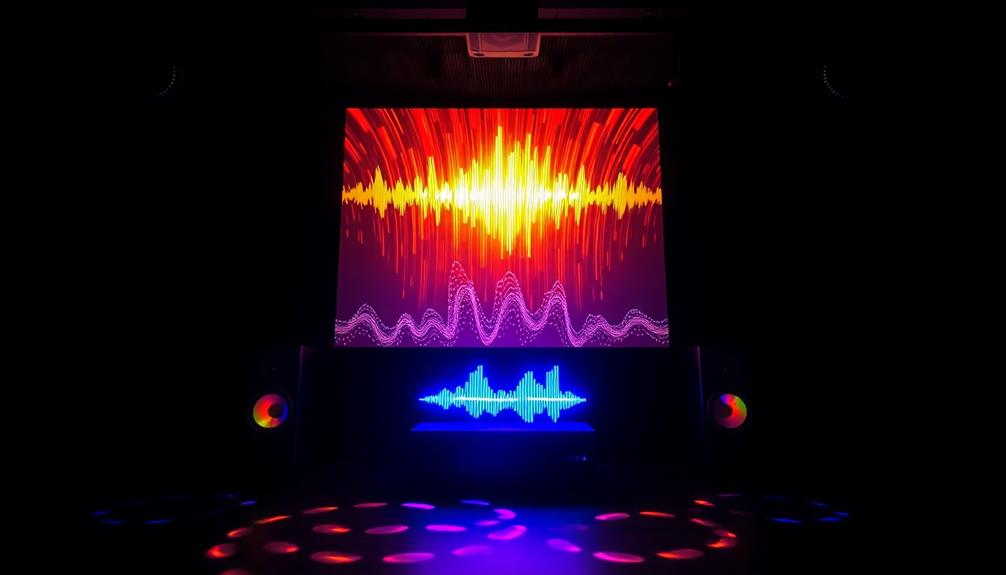
Once you've got your hardware and software in place, it's time to focus on audio processing techniques that will bring your visuals to life.
Begin by implementing the Fast Fourier Transform (FFT) algorithm to analyze audio signals. This tool breaks down sound into its frequency components, allowing for real-time visualization that reacts to what you're playing. To capture all audio output from your laptop, set the Stereo Mix as your default recording device.
Next, utilize OSC (Open Sound Control) protocols to transmit audio analysis data to your projection mapping software, like VPT. This integration enables dynamic visual representation, making your show more engaging.
To enhance interactivity, consider using libraries such as controlP5, netP5, and oscP5 in Processing. These resources help you develop visualizations that respond instantly to changes in the audio spectrum.
Creating Dynamic Visuals

Dynamic visuals are essential for immersing your audience in an audio-visual experience that captivates and energizes. To start creating dynamic visuals, perform Fast Fourier Transform (FFT) analysis on your audio samples. This process isolates frequency bands, allowing for real-time visualization that reacts to the audio input.
Using projection mapping software like VPT, design layers that correspond with these frequency bands. This guarantees your visuals change in sync with the sound, providing an engaging experience.
Implement a user interface that enables frequency monitoring and gain control, giving you precise adjustments for even more compelling visuals.
Consider creating multi-layered projections for each box in your setup. This approach allows for distinct visual representations of different audio frequencies across various surfaces. It adds depth and complexity to your display.
Overcoming Common Challenges
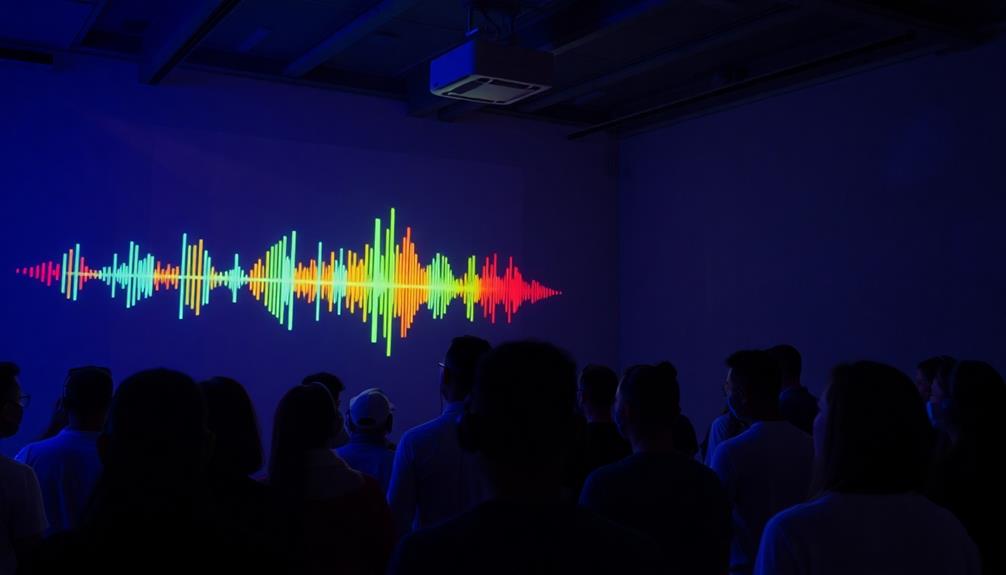
Creating enchanting visuals can present a range of challenges, especially when using stacked boxes for projection. You might find overlapping projections leading to visual confusion, which can really undermine your immersive experience. To overcome this, guarantee each layer is clearly defined.
I've tried using masking techniques to isolate projections on each box, and it's a game changer for enhancing visual clarity. Additionally, utilizing high contrast ratios can help achieve deeper blacks and brighter whites, making your visuals pop even more, essential for detailed image rendering in dark scenes the role of contrast ratio.
Consider simplifying your setup by using 2D projection surfaces like boards; they offer easier management compared to complex 3D shapes. Plus, implementing easing algorithms can help create smooth shifts in your visuals, preventing abrupt fades that distract from the audio experience.
To elevate your projection quality, don't hesitate to test various materials for your surfaces. The right material can greatly improve visibility and react better to lighting conditions.
Here are three challenges you might face:
- Overlapping projections causing confusion
- Abrupt shifts disrupting immersion
- Poor visibility due to inadequate materials
Frequently Asked Questions
How Do You Use a Projector With a Sound System?
To use a projector with a sound system, connect your projector to the audio source, verify compatibility, and adjust settings for ideal clarity. Position it properly to achieve the best visual experience alongside your audio.
Is There a Program That Can Visualize Audio?
Yes, programs like Processing, VPT, and Blaze 3 can visualize audio. They analyze sound frequencies, creating dynamic visuals that respond to music, enhancing your experience with engaging, interactive audio-visual installations. You'll love the results!
How to Get Sound When Using a Projector?
Imagine sound waves dancing through the air. To get sound when using a projector, set your laptop's audio source correctly, connect external speakers, and guarantee everything's configured for an enchanting auditory experience.
How to Make a Real-Time Audio Visualizer?
To make a real-time audio visualizer, start by analyzing audio frequencies with FFT. Use software like Processing to create visuals that respond dynamically. Finally, guarantee your audio input captures sound accurately for effective visualization.
Conclusion
So, you've mastered the art of turning sound into sight, only to realize that your projector's brighter than your future. As you bask in the glow of your vibrant visuals, remember that each beat doesn't just resonate in the air—it dances across the walls, teasing your senses. Embrace the chaos of colors and sounds, and let your imagination run wild. After all, who needs silence when you can have a symphony of visuals lighting up your world?
Hi, I’m Dominique. I love movies and want everyone to have the best home cinema experience possible. That’s why I started 1home Theatre Projector. We help people build their home cinema system using the latest technology and news on laser tv and all-around home entertainment.
We’re a small team of movie buffs (and experts) who are passionate about giving our readers the best advice and information possible. So whether you’re just starting out or you’re looking to upgrade your home cinema system, we’ve got you covered!
Home Cinema
DIY Projector Control System: Integrating With Smart Home Devices
Automate your DIY projector control system with smart home devices to enhance your viewing experience; discover the endless possibilities that await you.

Integrating a DIY projector control system with your smart home devices enhances your viewing experience greatly. You can automate projector movements using linear actuators and relays for perfect screen alignment. By connecting to a smart home hub like Home Assistant, you gain control over lighting, climate, and audio-visual systems, creating tailored "movie mode" scenes. Use smart lighting and climate control to set the perfect ambiance automatically. Plus, adding security features guarantees peace of mind. If you want to maximize your home cinema setup, there's much more to explore in the steps and setups available.
Key Takeaways
- Utilize linear actuators and relays to automate projector movement for optimal screen alignment in your home theater setup.
- Integrate your DIY projector control with Home Assistant for seamless automation and voice command capabilities.
- Create automation scenes to enhance your viewing experience, such as "movie mode" to dim lights and lower the projector simultaneously.
- Connect smart lighting, climate controls, and audio systems for a cohesive and immersive entertainment environment.
- Ensure security by incorporating smart locks and surveillance cameras to protect your home theater equipment and enhance safety.
Understanding DIY Projector Control

When it comes to understanding DIY projector control, you'll find that automation can greatly enhance your viewing experience. By integrating smart home devices with your projector system, you can create a seamless setup that responds to your needs.
Utilizing components like linear actuators and relays, you can automate the movement of your projector, guaranteeing it adjusts perfectly to your projector screen.
Using a smart home hub like Home Assistant allows you to control your projector through automation systems. With a Fibaro Switch FGS 223, you can schedule operations and control power supply via smart plugs or voice commands.
The addition of a 12v DC linear actuator gives you precise control over the projector's height and position, making adjustments easy and effective.
To elevate your movie nights, consider creating automation scenes that link your projector with smart lights and sound systems. For instance, you can set a "movie mode" that dims the lights and lowers the projector simultaneously, enhancing your viewing experience.
Testing the functionality of your projector lift mechanism guarantees everything operates smoothly, providing you with a reliable home theater setup.
Essential Smart Home Protocols
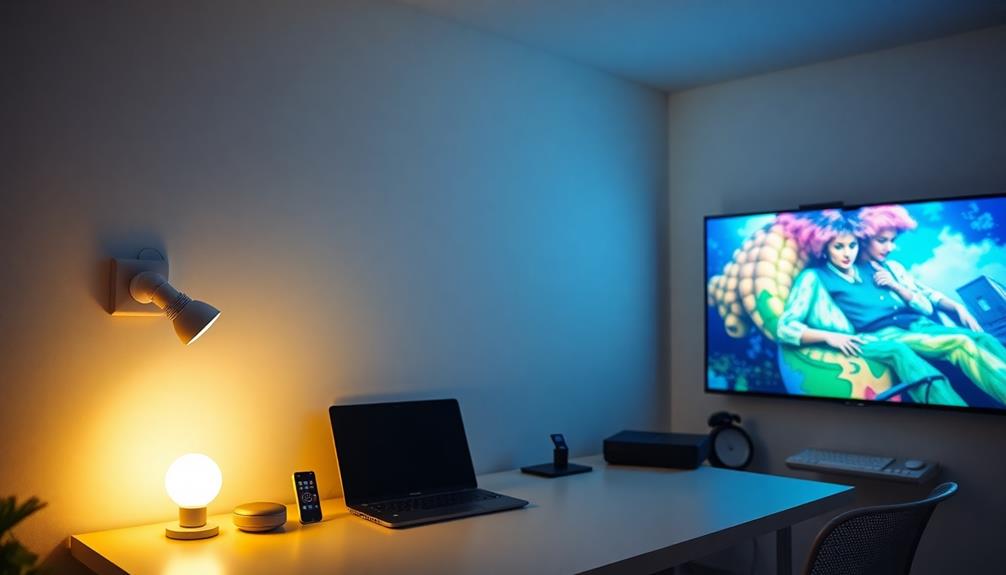
A variety of smart home protocols play an essential role in ensuring your devices communicate effectively. Wi-Fi is the most common choice for smart devices due to its ease of setup and broad compatibility. However, it can drain energy and create connectivity issues when too many devices are connected.
For more efficient communication, consider Zigbee, which operates on a low-energy mesh network. It's perfect for battery-powered devices like sensors and smart bulbs, but it does require a compatible hub for integration with systems like Home Assistant. Additionally, leveraging AI-driven personalization in E-learning can enhance user experience by adapting to individual preferences and needs.
Z-Wave is another reliable option, known for its robust security and longer range. Operating at a lower frequency than Wi-Fi, it minimizes interference, making it ideal for critical devices such as relays and switches.
By integrating these protocols within your smart home system, you can enhance automation and streamline control of your devices.
With Home Assistant, you can connect various smart devices, allowing you to create a cohesive system. This opens up possibilities for voice control, managing smart bulbs, and integrating security systems seamlessly.
Choose the right protocols, and you'll optimize your DIY projector control system and overall smart home experience.
Integrating Audio and Video Systems
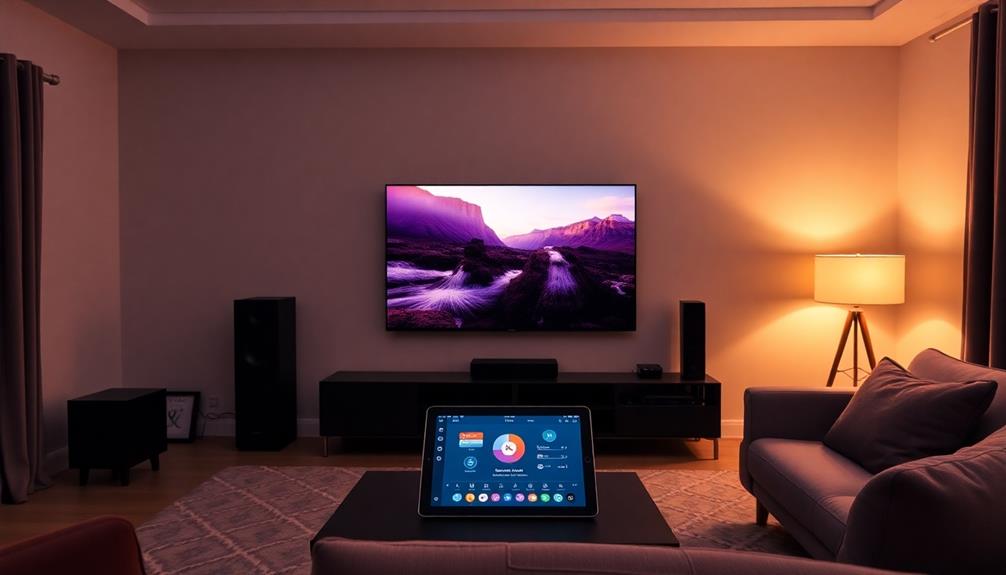
Integrating audio and video systems in your smart home creates a seamless entertainment experience, allowing you to control multiple devices from a single interface.
With the right setup, you can automate your home to enhance your movie nights or game days effortlessly. Utilize smart amplifiers and receivers to enable automatic input selection and volume adjustment based on the content being played, simplifying operation for everyone.
When you're setting up your smart home theater, consider smart lighting solutions that adjust automatically, optimizing your viewing environment based on screen brightness and time of day.
This integration in Home boosts comfort and immersion.
Voice assistants play an essential role in managing these audio and video systems. You can easily control playback, switch sources, and adjust settings hands-free, making it convenient during gatherings or when you're multitasking.
Automating Lighting and Climate
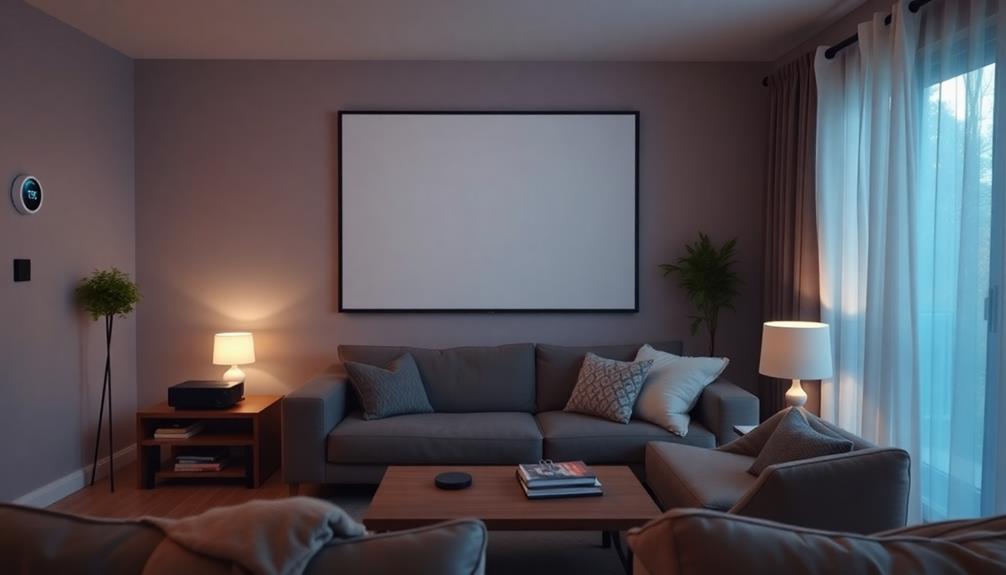
Automating lighting and climate in your home theater can greatly enhance your viewing experience. By incorporating smart bulbs or dimmer switches, you can adjust brightness based on your projector system's needs. This eliminates glare and creates the perfect ambiance.
Smart thermostats can play an essential role, too; they can be programmed to automatically adjust the climate before your movie starts, ensuring you're comfortable throughout the viewing session.
Utilizing motion sensors adds another layer of convenience. These sensors can turn lights on or off as people enter or leave the viewing area, promoting energy savings and a hassle-free environment.
Integrating smart blinds is crucial for controlling natural light levels. You can set them to automatically adjust based on the time of day or specific movie schedules, maintaining a dark atmosphere for your films.
With Home Assistant, you can create automation routines that link projector activation with simultaneous adjustments to your lighting and climate controls. This means when you're ready for movie night, everything falls into place seamlessly, enhancing your overall viewing experience and making it more enjoyable.
Security Features for Home Theaters

When setting up your home theater, security should be a top priority.
Integrating smart locks and surveillance cameras not only controls access but also keeps an eye on your equipment.
Plus, automating your alarm system can provide real-time alerts, ensuring you enjoy your movie nights without worry.
Surveillance Camera Integration
Security is a paramount concern for any home theater enthusiast, and surveillance camera integration offers a robust solution. By incorporating smart surveillance systems, you can enhance the security of your valuable equipment and enjoy peace of mind.
Additionally, ensuring a clean indoor environment with an air purifier can further improve the overall experience in your home theater by reducing allergens and creating a more pleasant space.
Here are some advantages of integrating surveillance cameras:
- Real-time monitoring: Stay updated with live feeds from your home theater.
- Motion detection: Advanced systems, like Reolink Cameras, can detect movement and trigger automated responses.
- Automated alerts: Connect your cameras to Home Assistant for instant notifications on unusual activity.
- Two-way audio: Communicate remotely with anyone in the theater area, adding an extra layer of safety.
Many modern surveillance cameras also feature high-definition video and night vision capabilities, ensuring you can monitor your space effectively, even in low-light conditions.
The combination of these features provides not just security but also convenience, allowing you to automate your home theater experience seamlessly.
With the right setup, you can transform your home theater into a smart home haven, where safety and automation go hand in hand.
Smart Lock Access Control
Integrating smart lock access control into your home theater setup adds an extra layer of protection for your valuable equipment. Smart locks can restrict access to your home theater by requiring authentication, guaranteeing that only authorized individuals can operate the system.
With features like biometric access or keypad entry, you can enhance security and make it more convenient for yourself and trusted guests. Additionally, considering the cost of home security systems can help you find the right balance between securing your home and staying within budget.
As part of your home automation journey, these smart locks offer remote access, allowing you to grant temporary access to visitors while maintaining control over who enters your space. Imagine being able to automatically open and close the door based on your presence or set schedules for movie nights.
Moreover, integration with your existing smart home devices guarantees thorough security. You'll receive alerts and notifications for any unauthorized access attempts, helping you monitor your setup in real-time.
Coupled with a security camera, you can keep an eye on your home theater from anywhere. By incorporating smart lock access control, you'll not only protect your equipment but also elevate your overall home theater experience.
Alarm System Automation
Enhancing your home theater experience goes beyond just the visuals and sound; it's also about ensuring a safe environment. Integrating an alarm system with your home theater can greatly boost home security, providing peace of mind while you enjoy your favorite films.
Here are some effective ways to automate your alarm system:
- Automatic Arming/Disarming: Set your alarm system to auto-arm or disarm based on your projector's operation, ensuring security during movie nights.
- Smart Locks: Use smart locks to restrict access to your home theater equipment, preventing unauthorized entry while you're immersed in a film.
- Motion Sensors: Incorporate motion sensors that trigger alerts or notifications when unusual activity is detected, offering real-time monitoring of the space.
- Automation Scenes: Create automation scenes that activate security cameras and alarms when the projector turns on, establishing a thorough security protocol.
Many home automation platforms, like Home Assistant, facilitate seamless integration of these features, allowing for one-touch activation of multiple security measures.
Troubleshooting and Maintenance Tips
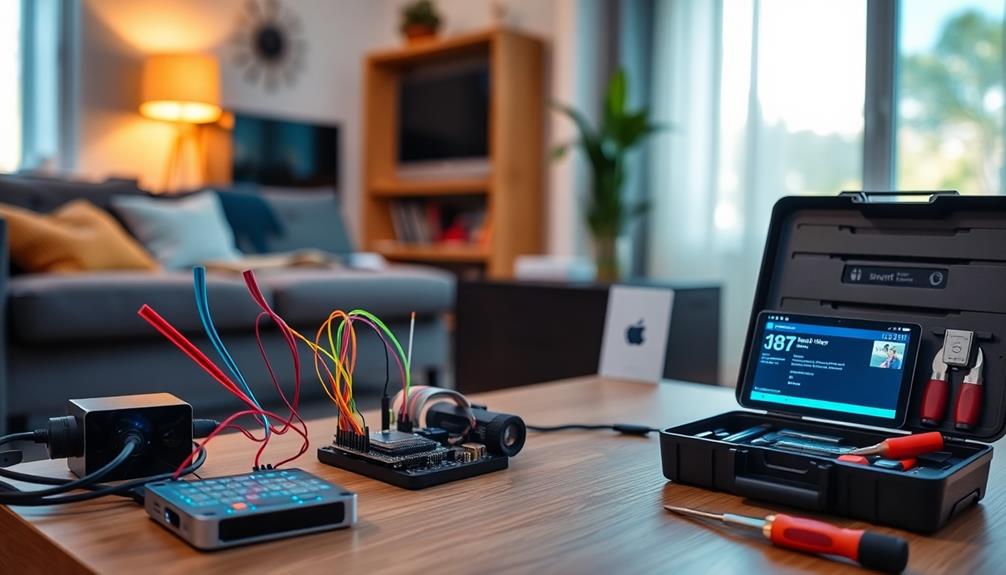
As you set up your DIY projector control system, it's essential to stay on top of troubleshooting and maintenance to guarantee everything runs smoothly.
Regularly test the linear actuator and relay functionality to catch any potential issues early in your integration process. Monitoring the temperature around the projector and actuator is important—overheating can lead to performance issues or even damage over time.
Using high-quality cables and connectors is critical for reliable signal transmission. This minimizes friction and guarantees your system operates at its best.
Make it a habit to keep the firmware and software for all your smart home devices updated. This not only enhances overall system stability but also provides you with improved features and security patches.
Document any troubleshooting steps and solutions you encounter. This will create a valuable resource for future maintenance and potential upgrades to your system.
Frequently Asked Questions
Can I Control My Projector With My Smartphone?
Yes, you can control your projector with your smartphone! Many projectors offer Wi-Fi or Bluetooth connectivity, allowing you to use dedicated apps or universal remote apps for easy management, enhancing your viewing experience effortlessly.
What Smart Home Platforms Are Compatible With Projectors?
You'll find several smart home platforms compatible with projectors, such as Google Home, Amazon Alexa, and Apple HomeKit. These systems let you control your projector easily, enhancing your home entertainment experience with seamless integration.
Is Voice Control Available for All Projector Models?
Not every projector model embraces the wonders of voice control. While some offer this delightful feature, others stick to traditional methods. You'll need to check individual specifications to see what suits your needs best.
How Do I Set up Scheduling for My Projector?
To set up scheduling for your projector, access its settings menu, find the scheduling option, and enter the desired times. Don't forget to save your settings to guarantee it operates as planned!
Can I Use Multiple Projectors in One Smart Home System?
Imagine a symphony of colors dancing across your walls. Yes, you can harmonize multiple projectors in one smart home system. Just verify they're compatible and configure them to work together seamlessly for an immersive experience.
Conclusion
Incorporating a DIY projector control system into your smart home elevates your entertainment experience. As the saying goes, "a stitch in time saves nine," so investing a little effort now will pay off later with seamless integration and automation. By connecting your audio, video, lighting, and climate systems, you create a personalized oasis that responds to your needs. With these tips, you'll enjoy a fantastic home theater while ensuring everything runs smoothly and efficiently.
Hi, I’m Dominique. I love movies and want everyone to have the best home cinema experience possible. That’s why I started 1home Theatre Projector. We help people build their home cinema system using the latest technology and news on laser tv and all-around home entertainment.
We’re a small team of movie buffs (and experts) who are passionate about giving our readers the best advice and information possible. So whether you’re just starting out or you’re looking to upgrade your home cinema system, we’ve got you covered!
-
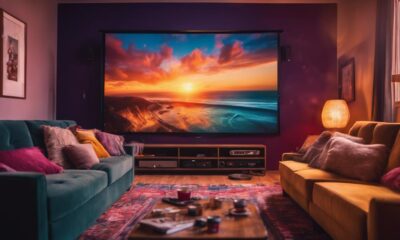
 Home Cinema3 months ago
Home Cinema3 months agoThe Role of Color Accuracy in Home Cinema Projectors
-
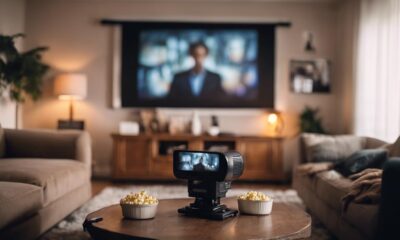
 Home Cinema2 months ago
Home Cinema2 months agoHow to Set up Picture-In-Picture With Your Projector
-
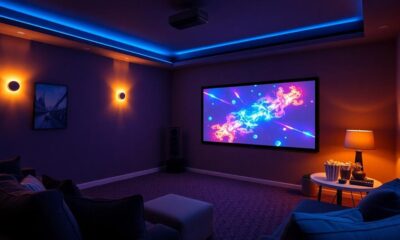
 Home Cinema1 month ago
Home Cinema1 month agoHow to Use a Projector & 10 Tips to Set up Your Projector Perfectly
-

 Beginners Guides1 month ago
Beginners Guides1 month agoHow to Connect Set Top Box to Home Theatre and TV
-

 Home Cinema3 months ago
Home Cinema3 months agoHow to Create a Retro Cinema Experience at Home
-

 Home Cinema3 months ago
Home Cinema3 months agoTroubleshooting Common Projector Issues: A Step-by-Step Guide
-

 Home Cinema2 months ago
Home Cinema2 months agoThe Environmental Impact of Projectors Vs. TVS
-
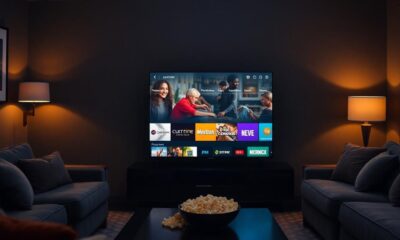
 Beginners Guides1 month ago
Beginners Guides1 month agoHow to Watch Curzon Home Cinema on My LG TV
